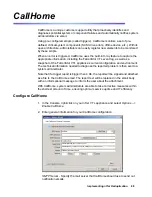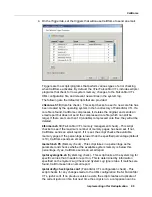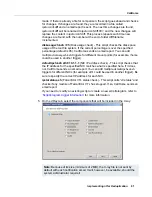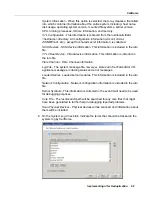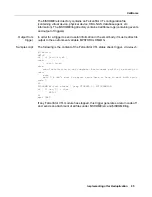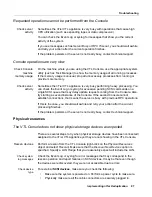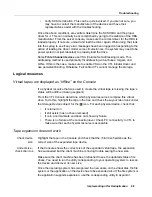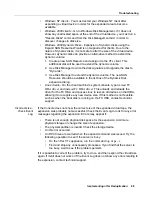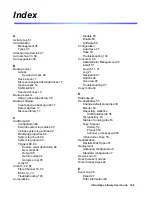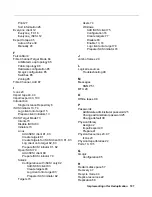
Troubleshooting
Implementing nTier Deduplication
100
Client cannot see tape library/drive as provisioned by FalconStor VTL
Check device
discovery by
OS
Check if the backup server’s operating system or the backup software that does not
see the tape library or drive. Depending on the OS, the new device is indicated in
the different ways:
•
Windows
- Tape libraries appear under
Medium Changers
and tape drives
under
Tape drives
. Usually the tape drive is indicated as
\tape<index>
.
•
Linux
- The tape library is usually indicated by
/dev/sg<index>
(the
sg
module should be loaded) and the tape drive by
/dev/st/<index>
,
/dev/nst/
<index>
, and
/dev/sg/<index>
(The
st
module should be loaded).
Operating
system does
not see device
If the operating system does not see the library/drive, you need to troubleshoot
virtual device discovery. To do this, in the Console, select the VTL server object.
Check the
Server Status
line in the right pane. If status is
offline,
that is the problem,
because a backup server cannot see an offline device. Refer to the
’Virtual tapes are
displayed as "offline" on the Console’
section for more information.
If server status is
online
, check the backup server’s configuration.
•
Check client assignment
- In the Console, right-click on the specific client.
If you do not see virtual devices on the
Resources
tab, assign them to that
client. To share a device between several clients the mode should be
Read/
Write non-exclusive
, otherwise device attachment fails.
•
Check WWPN
- In the Console, right-click the Fibre Channel client and
select
Properties
. Record initiator and target WWPNs. Highlight the
Physical
Resources
object and locate the HBA that matches the recorded target HBA
WWPN. Highlight the
SNS table
tab for that HBA and look for the WWPN
that matches the recorded initiator WWPN. If the WWPN is not correct,
unassign the client and assign it again using the appropriate mapping type.
If multiple HBAs exist, either from the client host or from the VTL target, look
up all entries from all target SNS tables.
•
Check VSA addressing
- Some Fibre Channel hosts use VSA (Volume Set
Addressing) mode. This addressing method is used primarily for addressing
virtual buses, targets, and LUNs. If this is the case, make sure to enable
VSA on the VTL target driver. Otherwise some clients cannot detect more
than eight LUNs on VTL virtual devices.
Operating
system sees
device
If the operating system sees the device but the
backup software does not see the
device at all
, you need to check the drivers for the backup software. Make sure the
driver used corresponds to the nature of the library and also the tape drive. Some
backup products recommend using specific versions of drivers. Refer to the backup
software manual for such settings or any necessary upgrade. Also, make sure that
multiple backup software packages are not installed on the same backup server as
they may conflict with each other.
If the operating system sees the device but the
backup software does not see the
device in the expected place
, you need to check serialization. VTL libraries
support serialization. Serialization is the conversion of the content of an object into a
sequential stream. It identifies the owner of each component, such as robot, slots,



